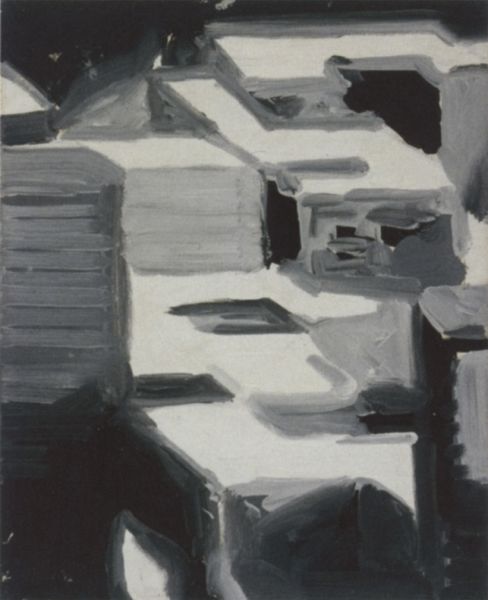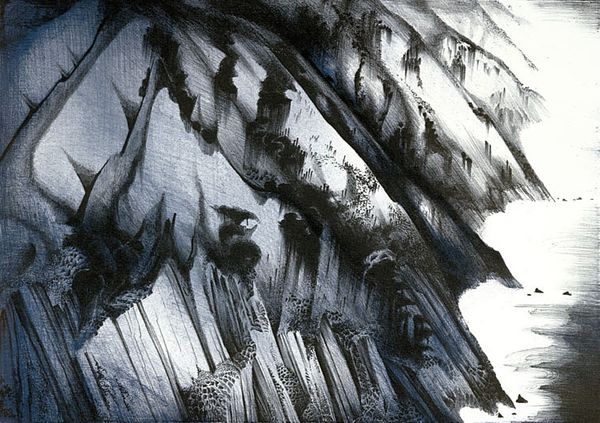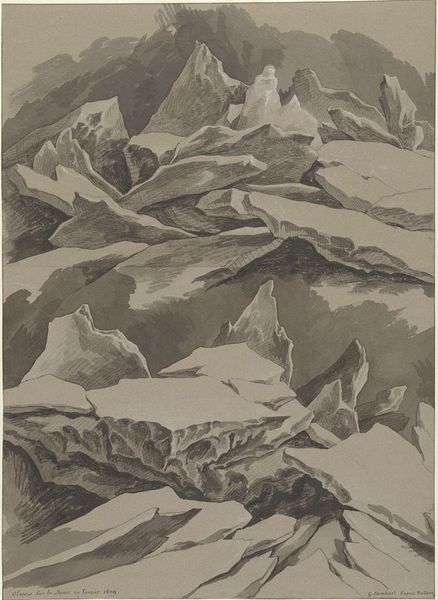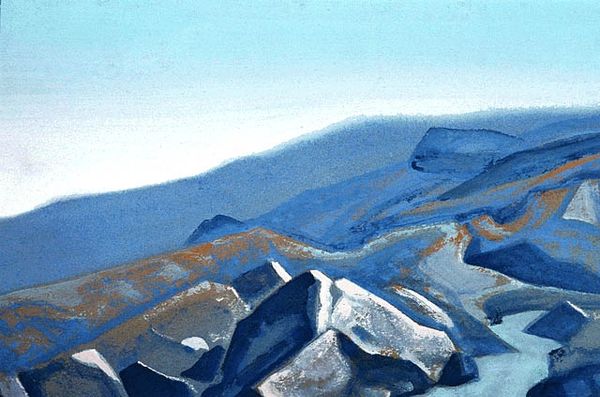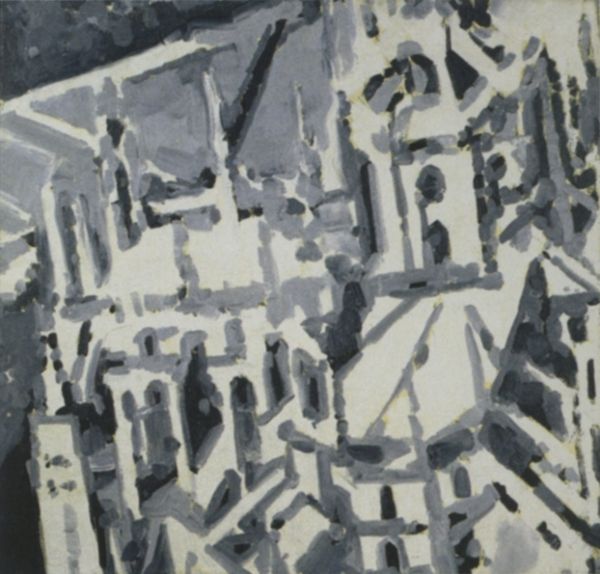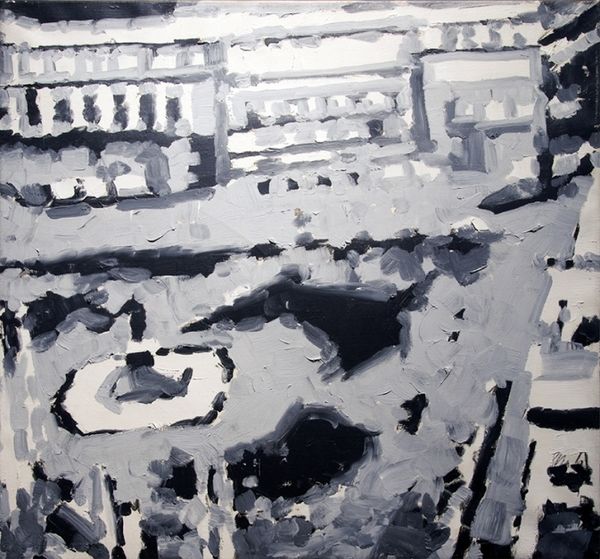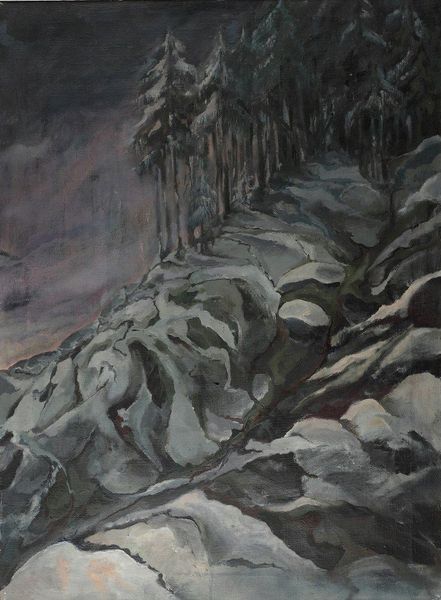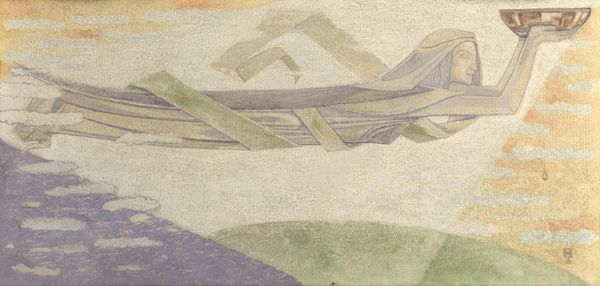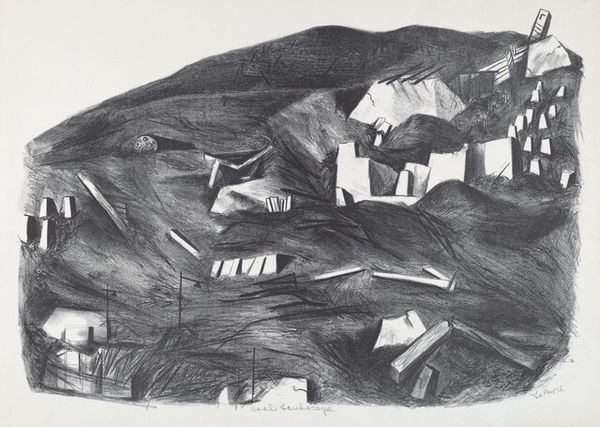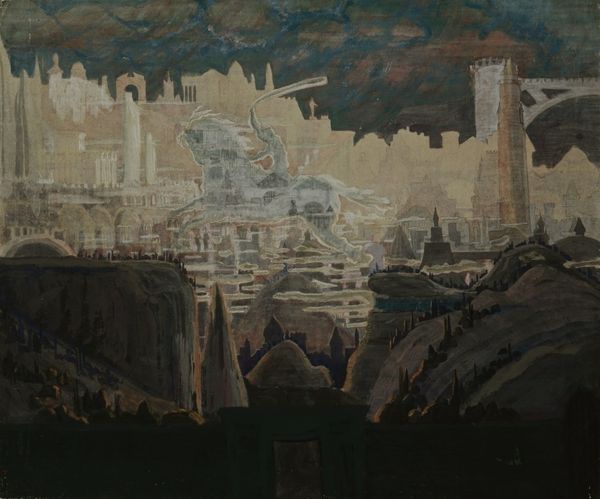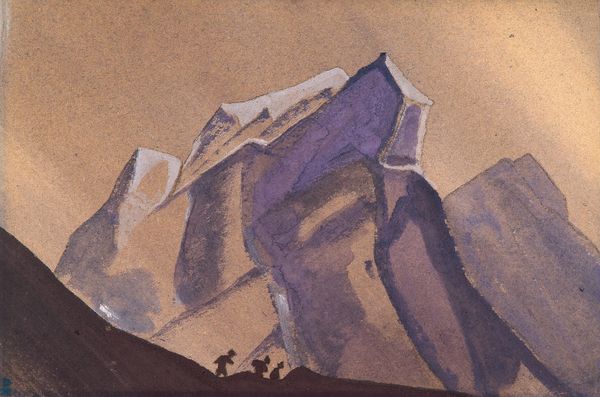
#
capitalist-realism
Copyright: Modern Artists: Artvee
Curator: Let’s turn our attention to Gerhard Richter's “Stadtbild,” or “Cityscape,” painted in 1968. It’s an oil painting, full of greys, blacks, and whites... It just sucks you in, doesn't it? Editor: It does, it has that magnetic pull of urban ambiguity. My first thought is film noir meets architectural blueprint. Stark, angular, somehow both solid and dissolving. Is it meant to feel…unfinished? Curator: I think that’s precisely the sensation Richter intended! There is this incredible tension between representation and abstraction that’s classic for Richter, this hovering between two states that asks you, or maybe dares you, to look closer. This period comes after Richter fled East Germany, and you can almost feel this in his work, reflecting a world caught mid-construction, mid-destruction. Editor: The greyscale is striking. Reducing the color palette like that focuses the eye on the forms, emphasizing the underlying geometry. I think about how historically cities are associated with progress, civilization, but reducing them to these monochromatic blocks strips away that comforting narrative. Curator: Exactly. In 1968, Richter was beginning his project of “blur,” physically blurring photographs. It seems he’s applying a similar idea here, smearing that sharp precision of architecture. Maybe memory works this way, like a photograph dissolving. The cityscape is always partially remembered, partially constructed. Editor: I agree completely. The sharp contrast in tone is potent with symbolism: stark contrasts in wealth, between the established and the emergent, or between utopian ideals and the often brutal realities of urban existence. This echoes the way the built environment affects psychological states. These shapes feel like archetypes—oppressive in their scale and impersonality. Curator: I love that, connecting the psychological to the spatial, a mirrored reflection of what we expect of a city to provide, to how it actually makes you feel. And that is what keeps it fascinating for me, I always see something slightly different. Editor: Absolutely, an endless interpretation depending on the observer. A really powerful urban reflection!
Comments
No comments
Be the first to comment and join the conversation on the ultimate creative platform.
